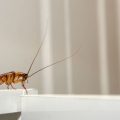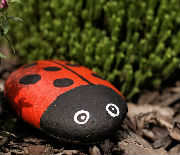
Laying in bed, the scratching and scurrying starts. It begins as a faint noise, but eventually, the quiet, gnawed, chirping becomes impossible to ignore. You undoubtedly have rats in the attic. These pests not only disrupt your tranquillity and destroy a decent night’s sleep but, if left uncontrolled, they can seriously damage your house.
Rats provide structural and safety hazards from eating through insulation to gnawing on electrical cables. Whether your invasion is modest or more severe, knowing how to get rid of rats in the attic is crucial. This guide contains professional advice and natural solutions that will allow you to permanently retrieve your attic.
Table of Contents
What Do Rats in the Attic Sound Like?
Hearing weird noises in the attic? You may notice some shuffling or scurrying sounds as rats move around your home and attic. Gnawing and chewing coming from the loft are common signs that rats have occupied your house.
Rats and mice are nocturnal creatures, which means you’re not likely to encounter them during the day. They often make their way into your attic to spend the night, and most of them chew through the drywall to get there.
Signs of Rats in the Loft
- Rat droppings –When inspecting your loft or attic, look for brown droppings in corners and along walls. Rats like to nest anywhere dark and cool, so look for brown faeces shaped like grains of rice.
- Noises in the loft – Rats are typically more active at night than during the day, especially during cold weather. You may hear them scurrying around the attic or in the ceilings late at night.
- Gnawing – Rats are known to gnaw on wood, plastic, and metal, so make sure you check for gnaw marks on skirting boards and door frames, especially in attics. They can also chew through wires, so check throughout your home for any holes.
- Smudge marks –Rats are notoriously unhygienic creatures that carry dirt on their fur as they travel through fields, sewers, and pipelines. It’s easy to see the marks of dirt and rodent droppings on wall panels, skirting boards, carpets, windowsills, and floors.
- Rat nests – Rats build nests in more hidden places, such as attics, crawl spaces, or under sheds. They can also be found in the walls of basements and drains. Look for food remains and rodent droppings. Here’s what happens when you disturb a rat’s nest.
- Rat footprints – Check attics, lofts and high-up areas where dust collects and footprints are easily visible
How to Get Rid of Rats in the Attic
Although rats in the attic could seriously damage your property, you can successfully get rid of them with the correct strategy. Here’s how to get rid of rats in the attic and keep them away, whether you choose natural remedies or more traditional approaches.
Identify and seal entry points
Finding out how rats are getting into your attic is the first step towards ridging it of them. Look for little gaps and holes around walls, vents, and your roof. Materials like steel wool, caulk, or metal mesh help to seal these access points which means stopping more rats from entering. Any attempts to eradicate rats will be fleeting without closing these cracks.
Set traps to eliminate rats
Trapping comes logically next once the attic has been sealed. If you are willing to play the how to catch a rat game, these are your options:
No-kill traps
Live traps are an excellent choice for people looking for a natural and humane way to get rid of rats in the attic.
- PROs: They are a humane method of catching rats, and there are no smelly corpses to dispose of afterwards.
- CONs: They require surveillance and regular check-ups. What’s more, they require a detailed plan as to how and where you’ll set the rats loose.
A great example of a no-kill trap is the bucket trap, not-so-flatteringly called ‘The Stairway to Heaven‘. It’s a 5-gallon bucket filled up to a third with water, a ledge for the rat to walk on and bait at the end of that ledge, right over the trap.
It takes about 15 minutes to make, and you can treat yourself to the rest of the peanut butter left in the packaging! You could even end up catching more than one rat in a single night, depending on how smart your enemies are.
Another popular type of no-kill trap is a metal cage with an automated mechanism to shut after the rat enters. It’s equally effective, but it takes the fun out of the DIY!
Lethal traps
- PROs: It diminishes the rat population faster and takes less of your time.
- CONs: You need to remove dead rats regularly because the rodents will eventually stop going for the bait if they see more than a few of their friends dead around it. Lethal rat traps are usually to be bought and not hand-made because they need to have strong structural integrity, as rats are stronger than mice.
When wondering where to place the rat trap in the attic, look for evidence of a rat trail – trampled down insulation and rat droppings. Placing the rat trap correctly is crucial to the success of your DIY rat control!
Use natural repellents
Natural repellents can help you get rid of rats in the attic naturally if you’re looking for more environmentally friendly solutions. These techniques are secure for use in households with kids and pets:
- Peppermint oil – Strong scents like peppermint are extremely irritating to rats. Place cotton balls that have been soaked in peppermint oil next to areas where rats congregate and access points.
- Ammonia and cayenne pepper – To make the environment in the attic unpleasant for rats and entice them to leave, scatter cayenne pepper or set bowls of ammonia in the corners.
- Ultrasonic devices – These gadgets produce high-frequency noises that are unbearable to rats but inaudible to people and animals, offering a simple and safe natural rodent repellent.
Check also:
How to Get Rid of Rats in Your Home
How to Keep Mice out of the Car Engine Compartment?
What’s the Difference Between a Mouse and a Rat?
Landlord or Tenant: Who is Responsible for Pest Control?
Remove food sources and declutter
Since rats are drawn to food and debris, it’s imperative to make your attic less appealing to them. Make sure that everything is sealed in tight, rodent-proof containers if you keep food in the attic. Since rats can chew through cardboard and plastic, it’s important to store items securely and firmly.
Mess creates ideal hiding places for rats. They flourish in shadowy, secluded spots where they can create their nests away from prying eyes. Keep your attic clutter-free and organised to avoid potential issues. Consistent cleaning and decluttering eliminate potential nesting materials and enable you to identify early signs of rat activity, preventing it from escalating into a larger issue.
Use poison with caution
- PROs: Requires less time and effort.
- Cons: Not suitable for homes with pets or children, as it kills indiscriminately. Not entirely effective because some rats have become resistant to it, and some just won’t eat the bait. The rats that eat the poison and die will die inside the house, and you will have to search and collect their carcasses.
If you decide to use the poison method to control your attic rat population, do so wisely and follow instructions. Place the poison in places in your attic only rodents have access to – between walls, crawl spaces, and dark corners. Keep your pets and children away at all costs.
Professional pest control
If the infestation is extensive or DIY methods haven’t worked, calling a professional rat control service is the best way to get rid of rats in the attic for good. A professional team can inspect your property, seal entry points, set up traps, and monitor the situation to ensure long-term results.
Are you dealing with a pest infestation?
You don't have to be alone in the battle against pests. Hire a professional pest expert!
Call usHow to Prevent Rats from Getting in the Attic
In times of rat invasions, you have to determine why and how rats get into your attic in the first place, and you’ll always be one step ahead of a disaster.
- Care for your garden. The tidier your garden, the less inviting it is to our rodent challengers!
- Prune your high plants and regularly clean debris out of the yard. This will limit the food source for the rats. Also, it sends a strong message – this is a home well taken care of.
- Keep your rubbish stored away from an entrance to your home. If rats find your rubbish attractive, they will just assume it gets even better inside the house. The solution – always keep it with the lid shut, no exceptions! A dab of ammonia in the bag right before it’s sealed off can be quite helpful as well.
- Seal holes. Make sure your attic is sealed tight – this is something you could get pest professionals to do for you or do by yourself. Buy the insulation foam and locate the cracks. Rats squeeze through even half-inch-long cracks and use every opportunity to do a thorough check.
Read more: Rat Prevention
Image source: Heiko Kiera/shutterstock.com










Leave a Reply